When most travelers think of the Albanian Riviera, their minds go straight to the beaches — and with good reason. The coastline is stunning. But just beyond the sun-drenched shorelines lie villages perched on hillsides, nestled in green valleys, and full of stories, traditions, and timeless beauty. These mountain villages offer something the beach cannot: a deeper connection to Albania’s soul, untouched hospitality, and a peaceful escape into the authentic rhythms of rural life. If you’re looking to add meaning, culture, and surprise to your Riviera trip — this guide is your compass.
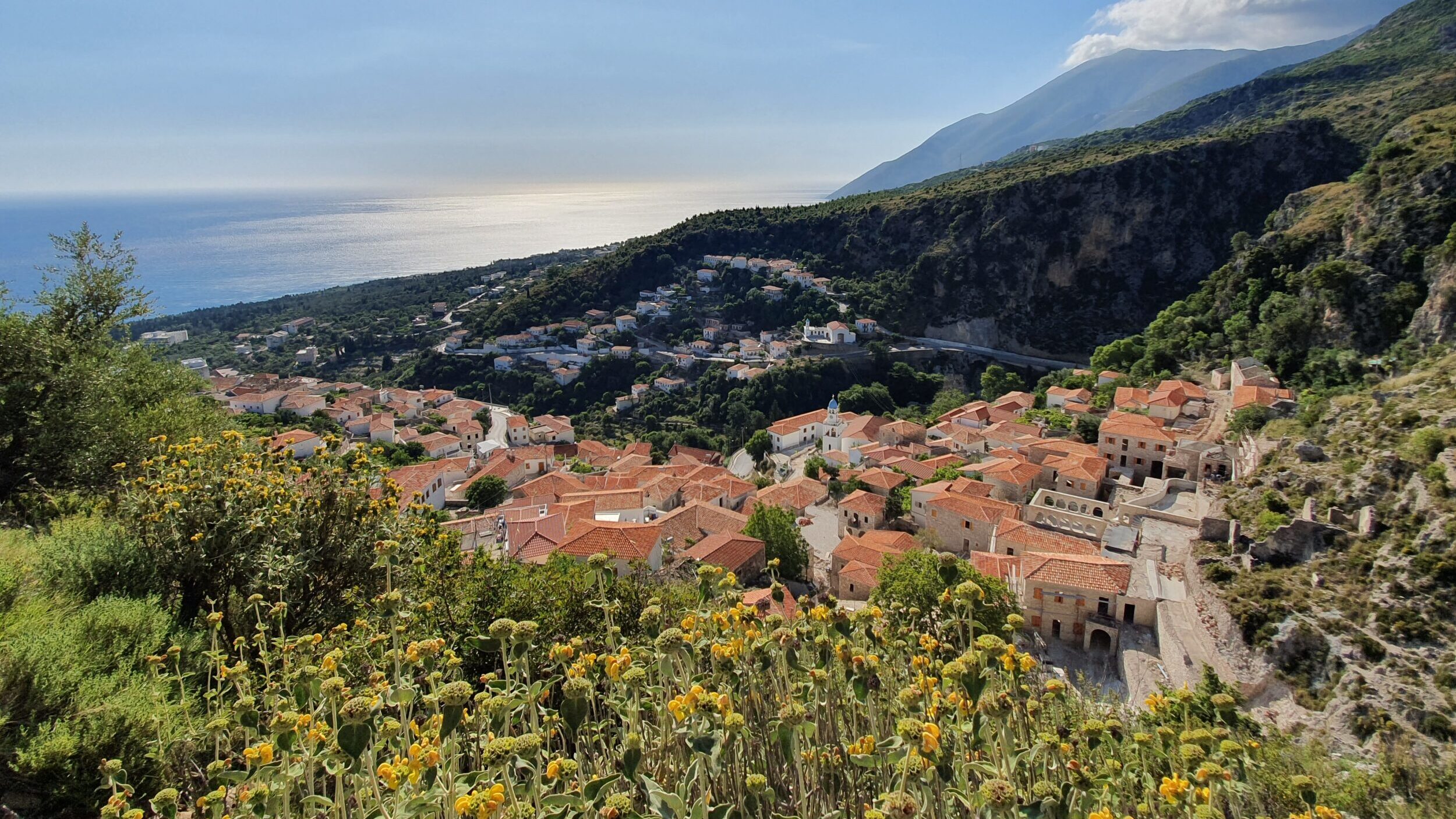
Dhermi: Where the Mountains Touch the Sea
Perched on the southern slopes of the Ceraunian Mountains, Dhermi is where dramatic cliffs meet the shimmer of the Ionian Sea. While the beach below attracts thousands each summer, the village above holds a quieter kind of magic. Think stone houses with blue-shuttered windows, narrow cobbled paths winding between olive groves, and no less than 35 tiny Orthodox churches, each whispering centuries of faith and tradition.
One of our favorite memories here? Climbing up to St. Mary’s Church at sunset — the view is a 360° panorama of sea, mountains, and sky melting into each other. And just a short drive away is Llogara National Park, where cool pine forests invite you to hike, picnic, or simply breathe in the alpine air. Whether you’re sipping homemade raki with locals or losing track of time on a balcony overlooking the sea, Dhermi blends the best of Albania’s coastal charm with its highland soul.
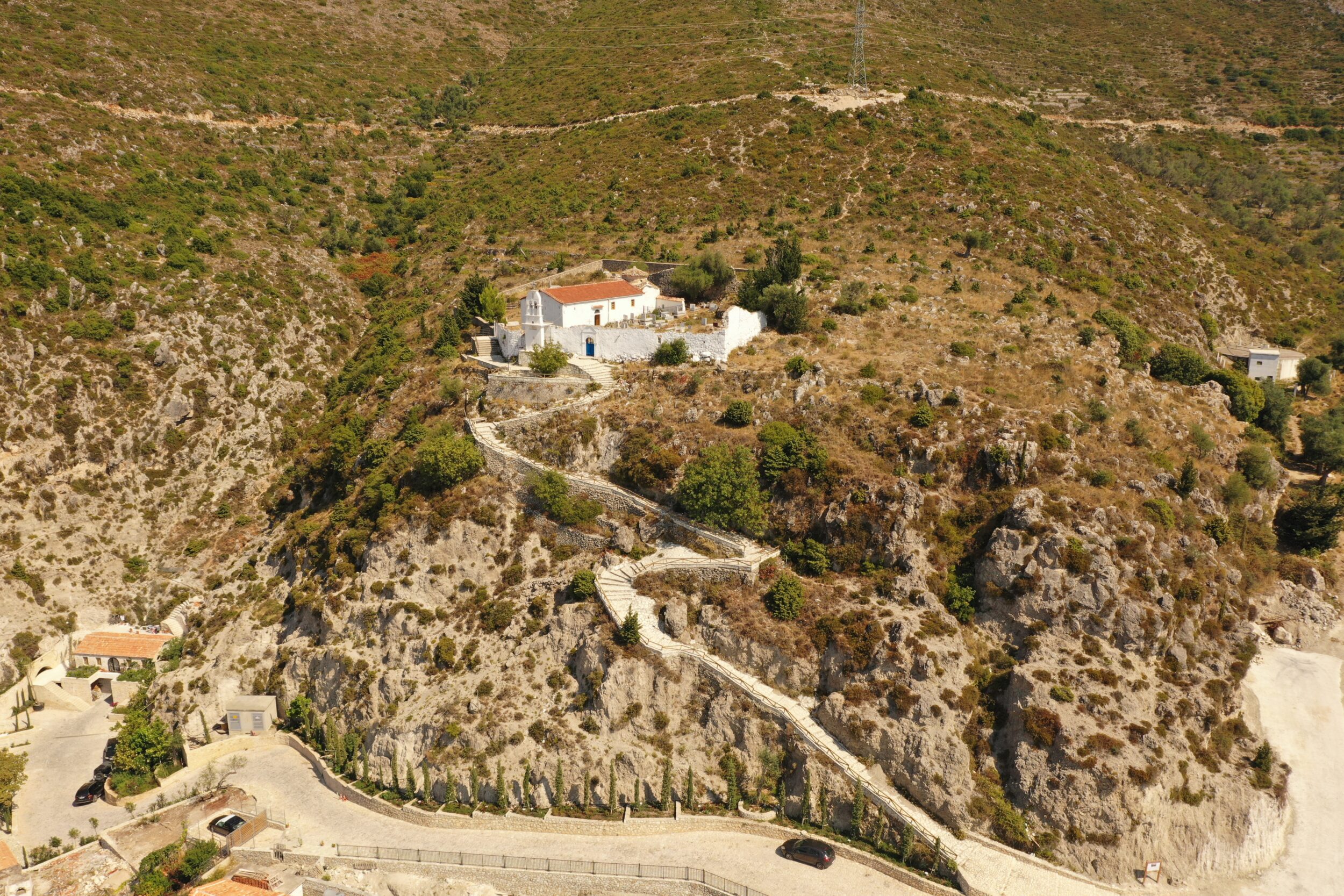
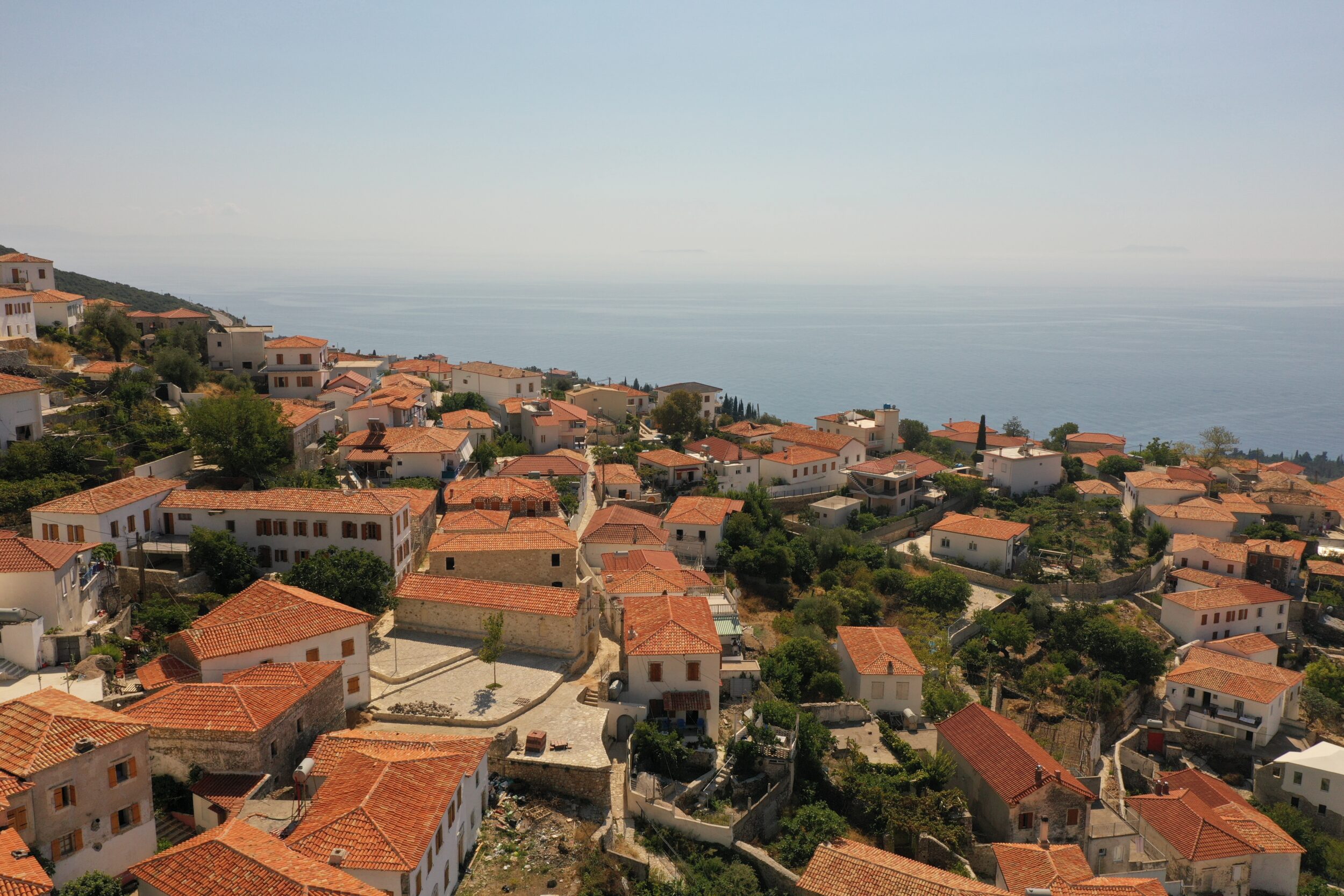
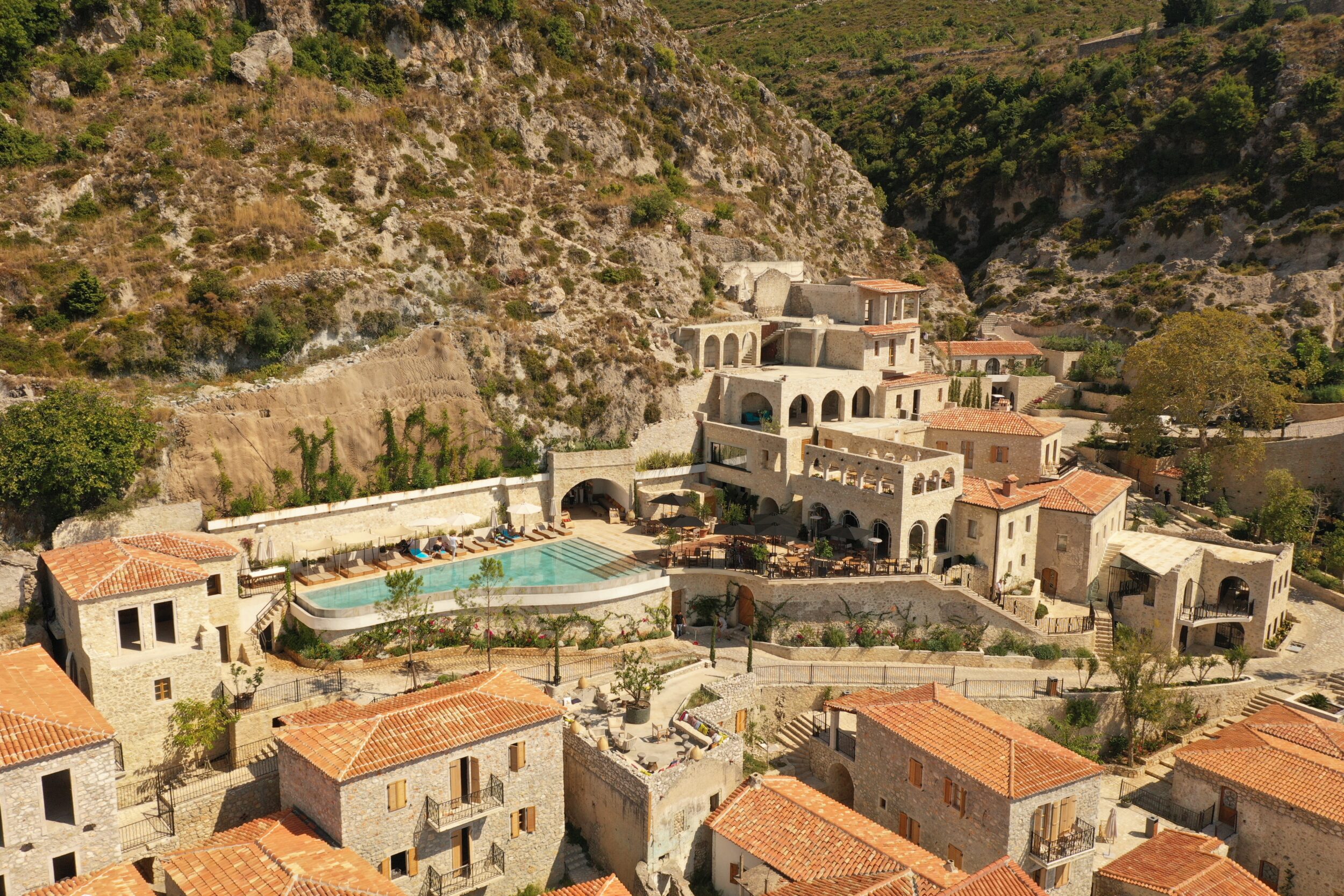
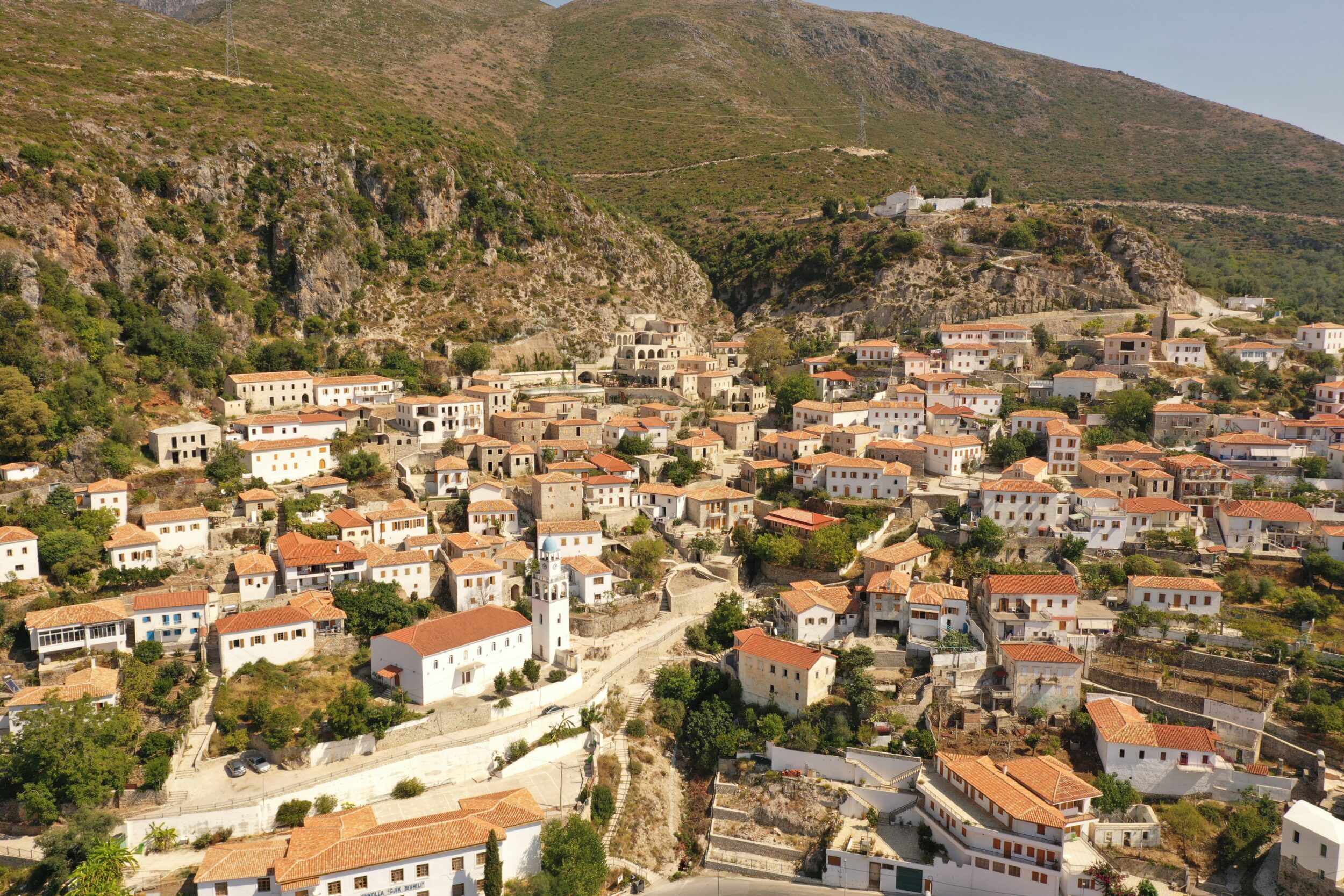

Kudhes: Quiet Hills and Deep Roots
Just a short detour off the main coastal road lies Kudhës, a village that feels like a living postcard from Albania’s highland past. Perched 335 meters above sea level, it’s surrounded by ancient olive groves and terraced vineyards that seem to have stood still for generations. Time moves slower here — and that’s exactly the charm.
As you wander the stone-paved alleys, you’ll pass by two centuries-old Orthodox churches and small family homes where goats graze nearby. Lunch was a spontaneous affair at a roadside house-turned-restaurant: grilled lamb, fresh cheese, and warm bread, all served with proud smiles.
For nature lovers, there’s a scenic hiking trail that connects Kudhes to the old village of Qeparo. It’s an easy-level path with unforgettable sea views along the way. We recommend doing it in May or September — the temperatures are perfect, and the light on the water is absolutely on point. Kudhes is the kind of place that doesn’t try to impress you — it simply lets you feel part of it.
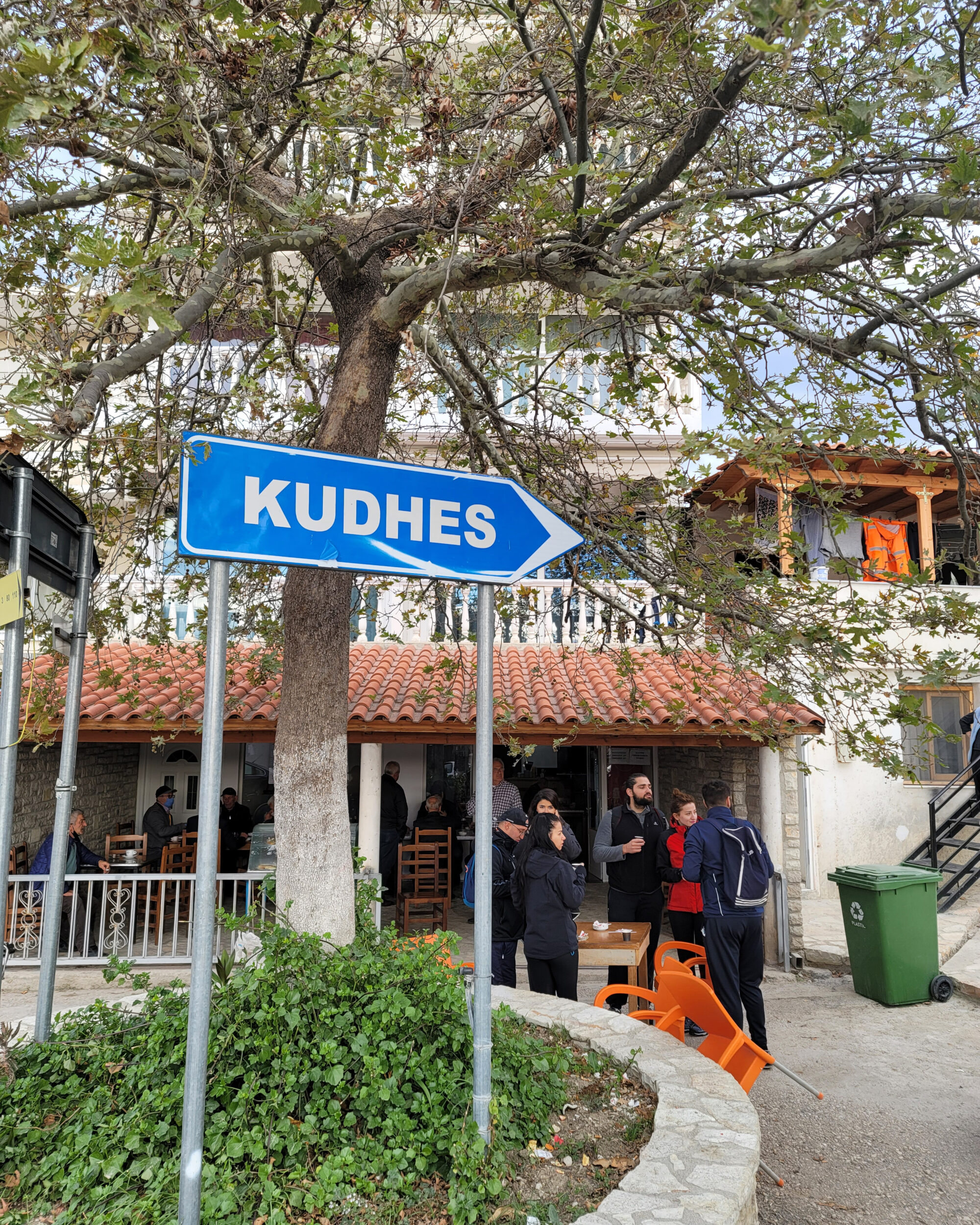
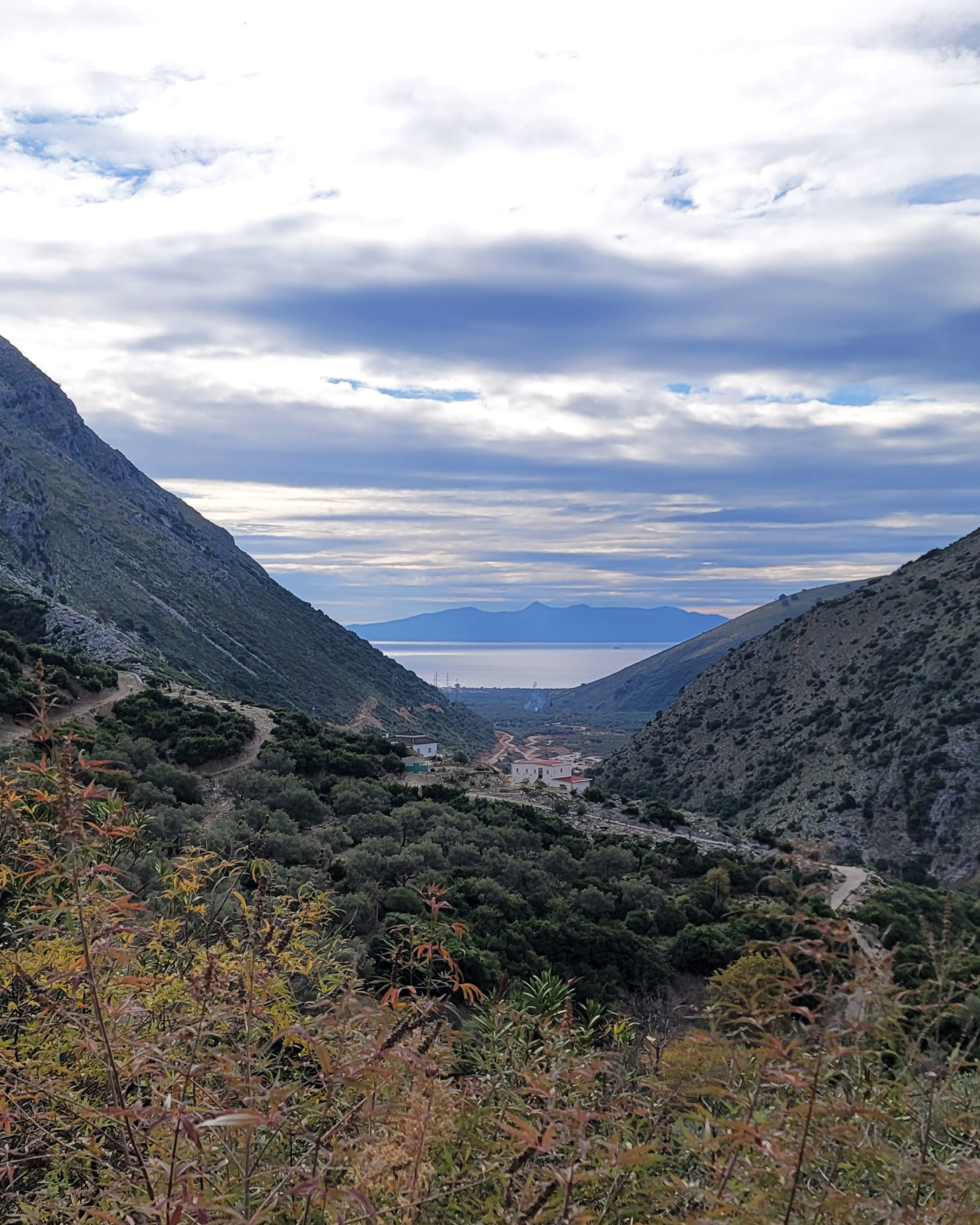
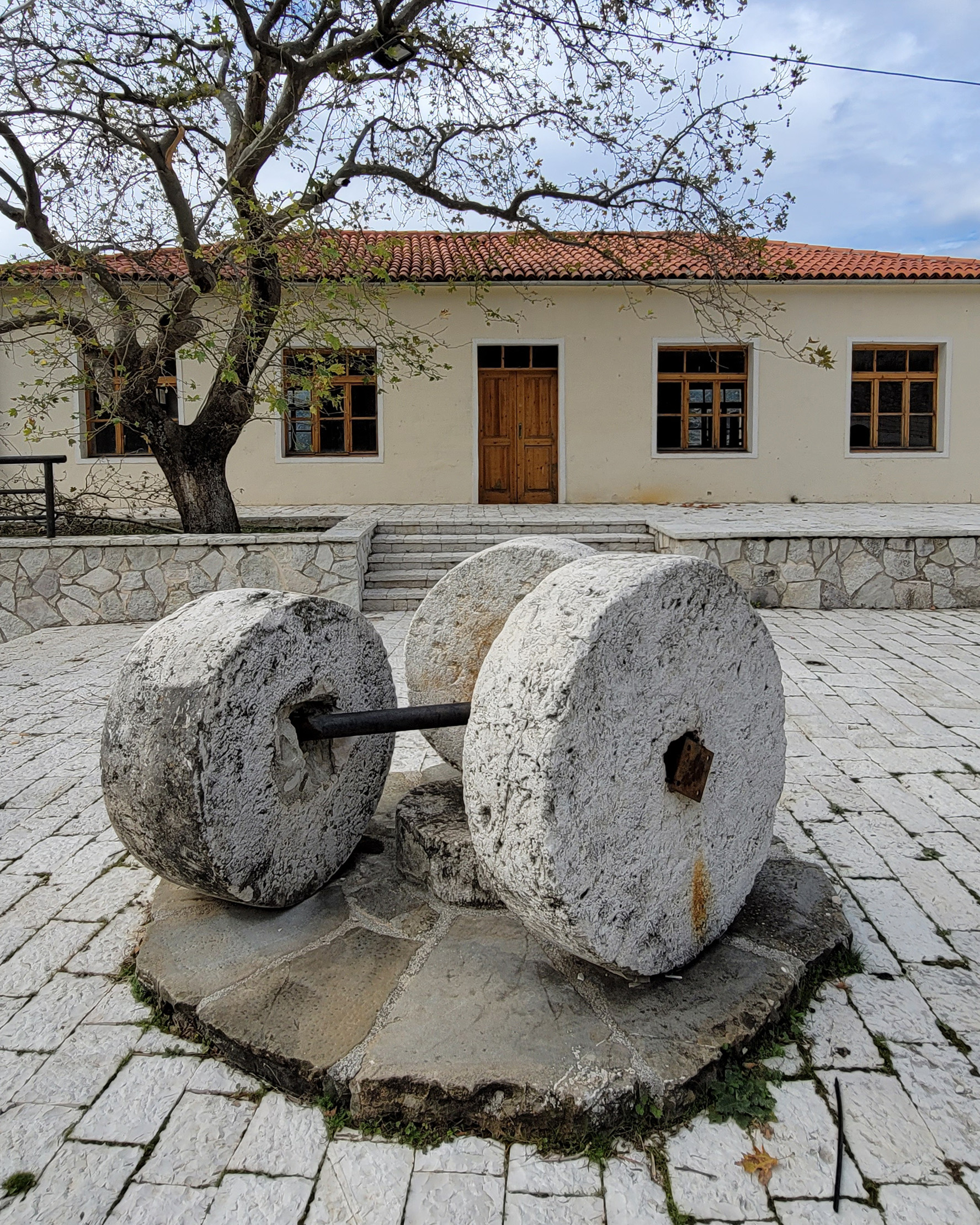
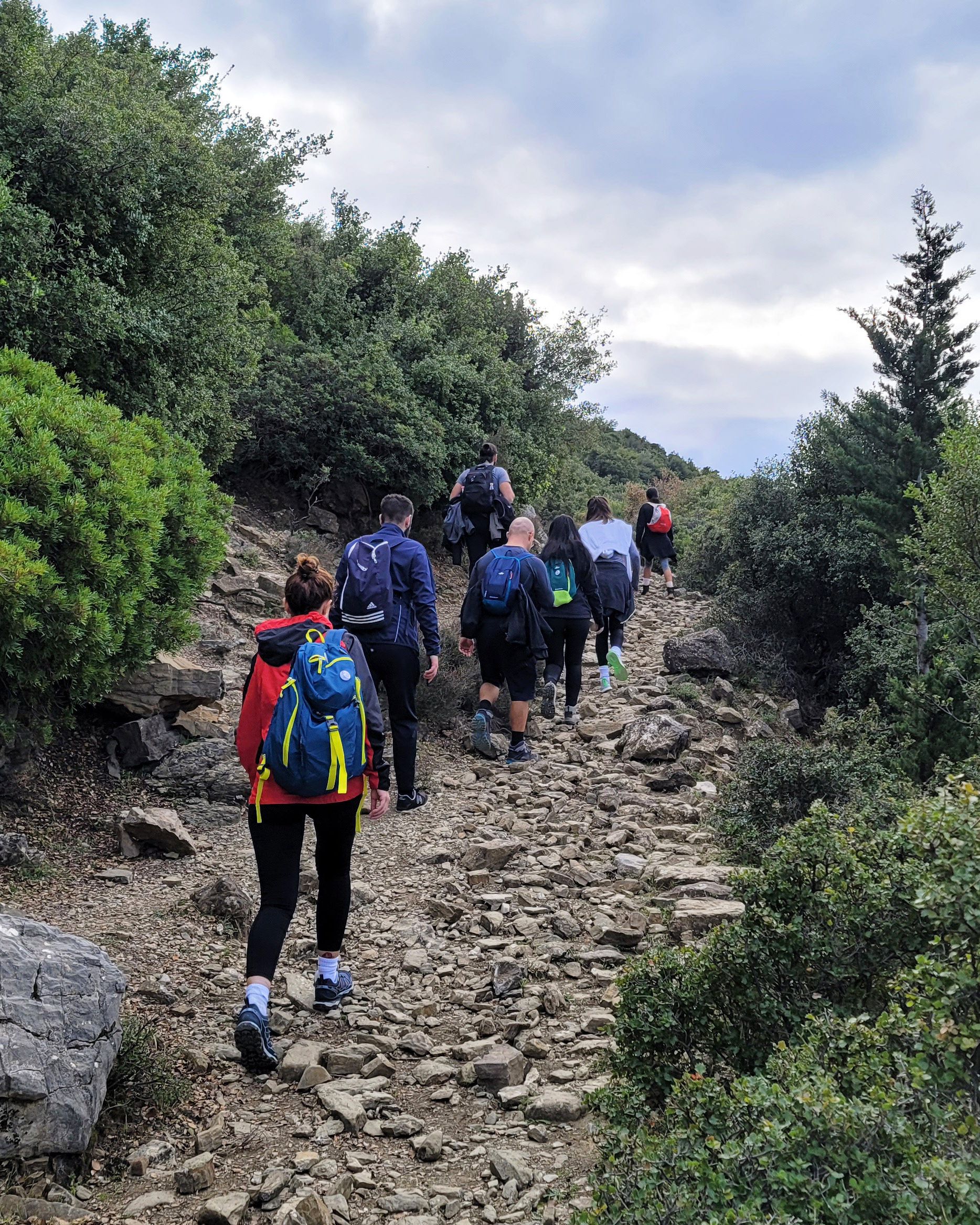
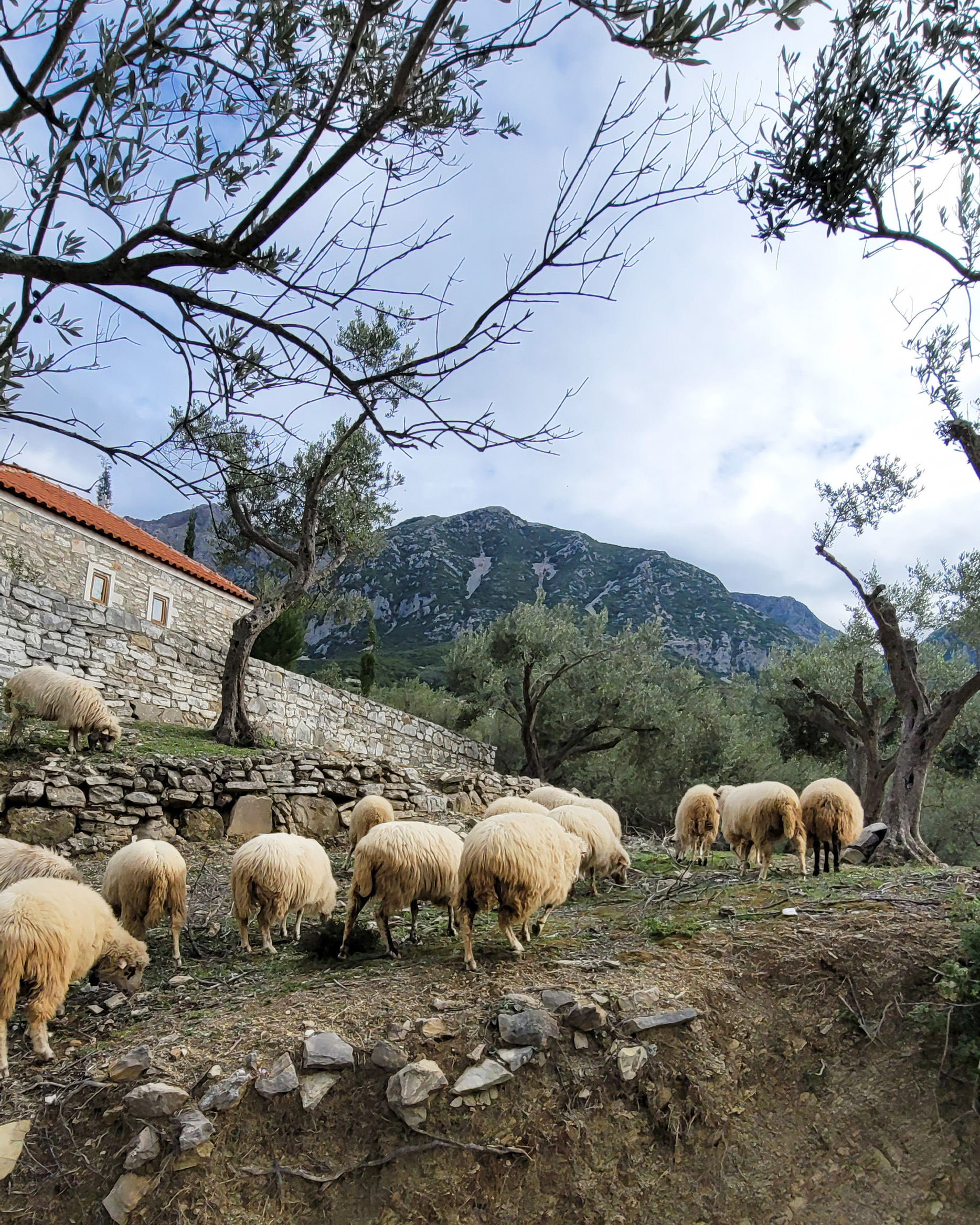
Pilur: The Balcony of the South
High above the Ionian coastline, about 10 kilometers inland from Himara, sits Pilur — a village often called “The Balcony of the South” for its breathtaking views over the sea and beyond. But the view is just the beginning. Pilur carries the soul of Labëria in every stone wall, in every folk song echoing through its hills.
What makes this village stand out is its living tradition of polyphonic singing — haunting, powerful harmonies performed by local groups in the village’s 400-year-old Orthodox church or in open-air gatherings. We stumbled into one such impromptu concert one evening, and it felt like we had walked into a ritual from centuries past.
The village itself is made of sturdy stone homes, lush olive groves, and winding paths that open up to panoramic vistas. You’ll find a few cozy guesthouses where you can enjoy homemade food, especially the traditional meat and vegetable casserole. Pilur is for those who want a true escape — not from nature, but into it.
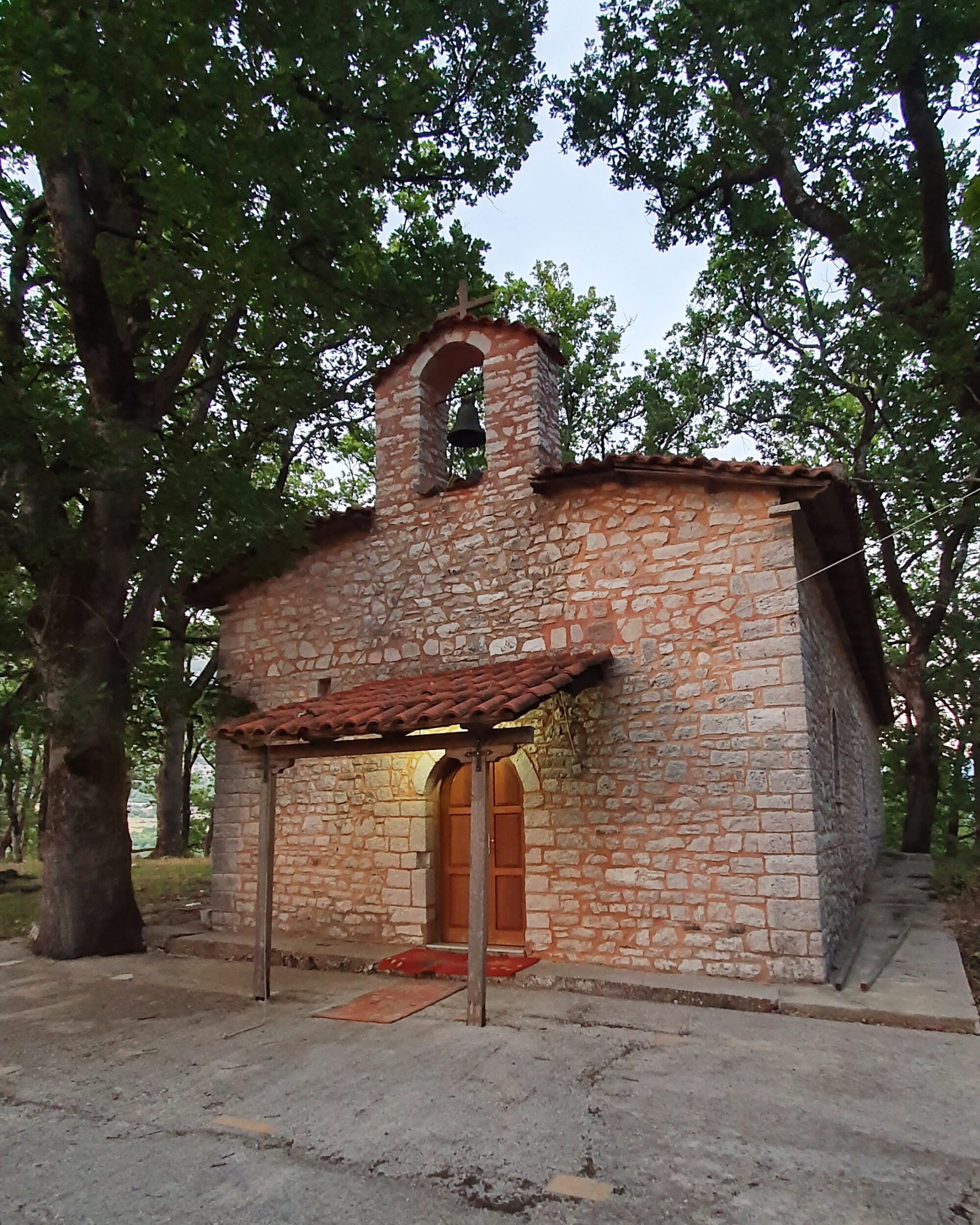
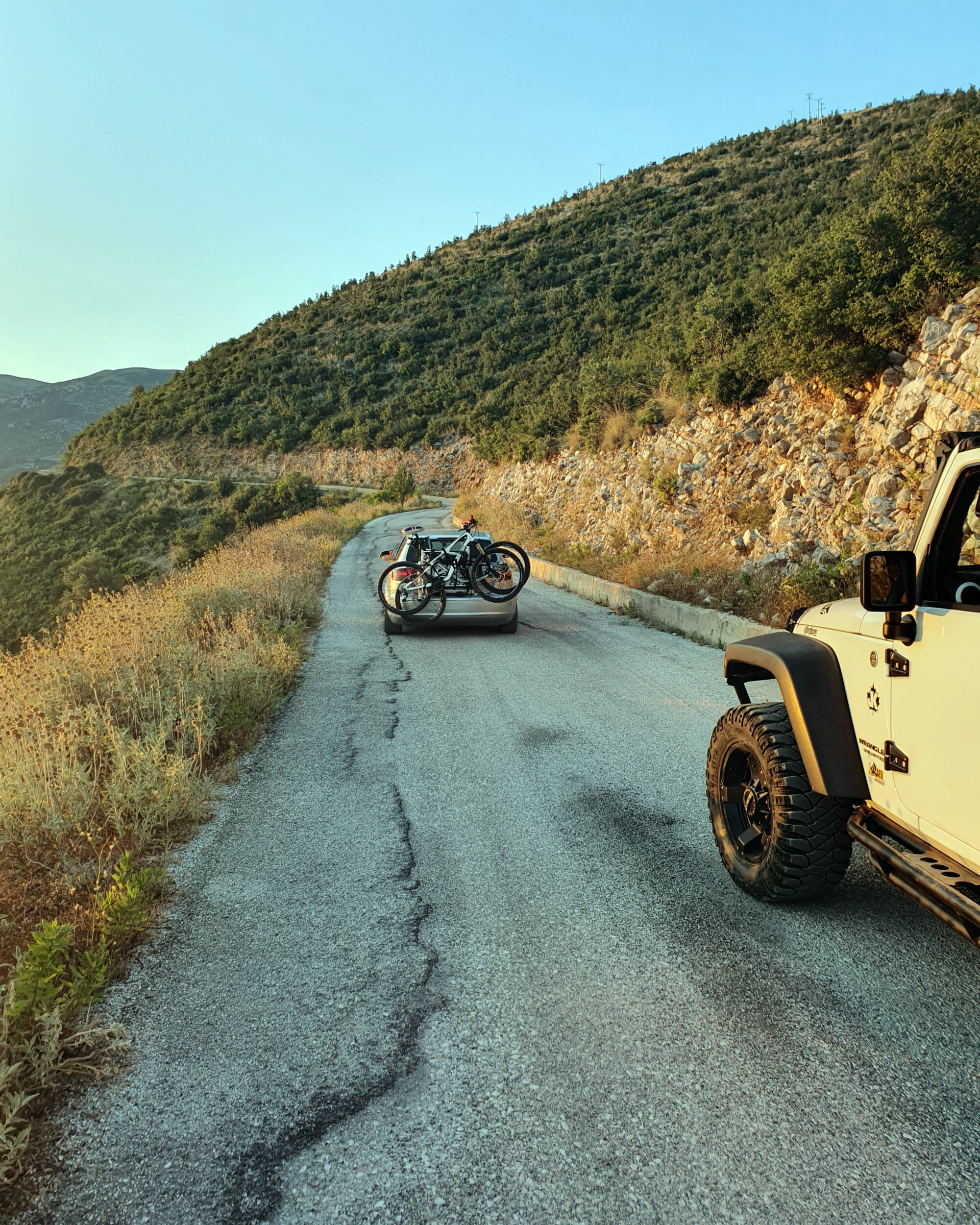
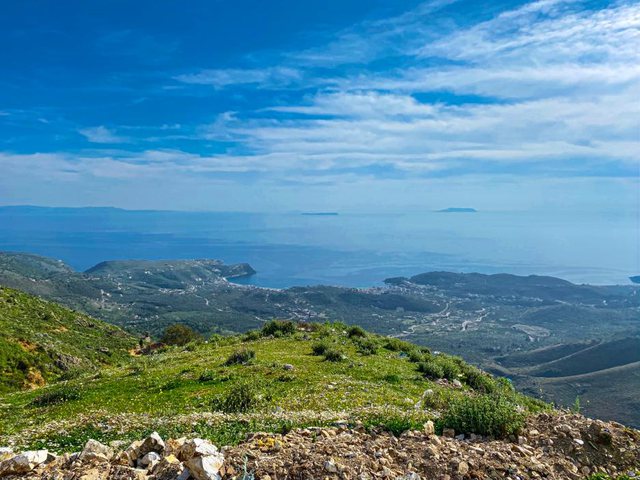
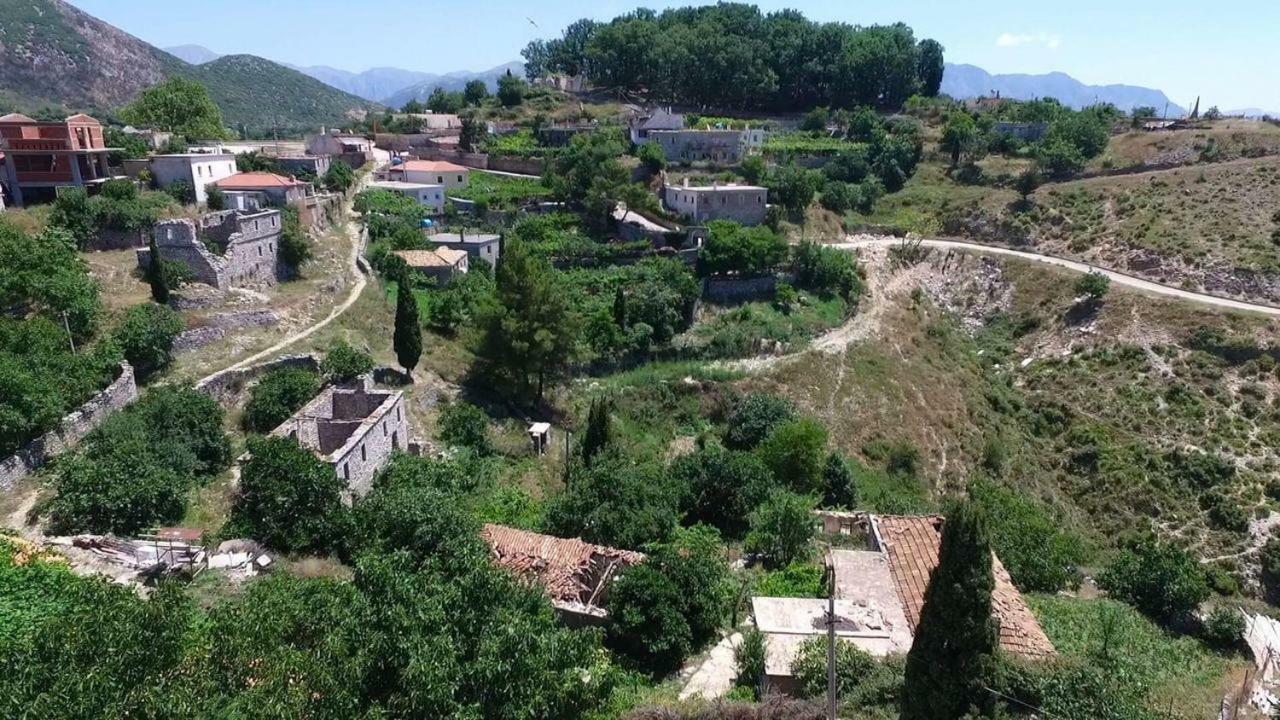
Qeparo (Old Village): Layers of Stone and Story
Above the shimmering bay, tucked into the hillside, Old Qeparo whispers tales of another time. Unlike the beachfront area below, this upper village feels frozen in its own rhythm — winding cobblestone paths, stone archways, and quiet corners that open up to panoramic sea views.
Qeparo is a place of contrasts: Albanian and Greek roots intertwine in its architecture, language, and local traditions. One highlight is the path toward Ali Pasha’s Castle — a gentle hike through olive groves and overgrown trails that ends with a majestic lookout over the Ionian. We took the trail just before sunset, and the entire bay turned gold. It was one of those rare moments where everything feels perfectly still.
Visitors can also join in seasonal activities like olive picking or simply enjoy a glass of homemade wine at a family-run guesthouse. The slow pace, the stories, the view — Old Qeparo offers a gentle reminder: beauty is often found above the obvious.
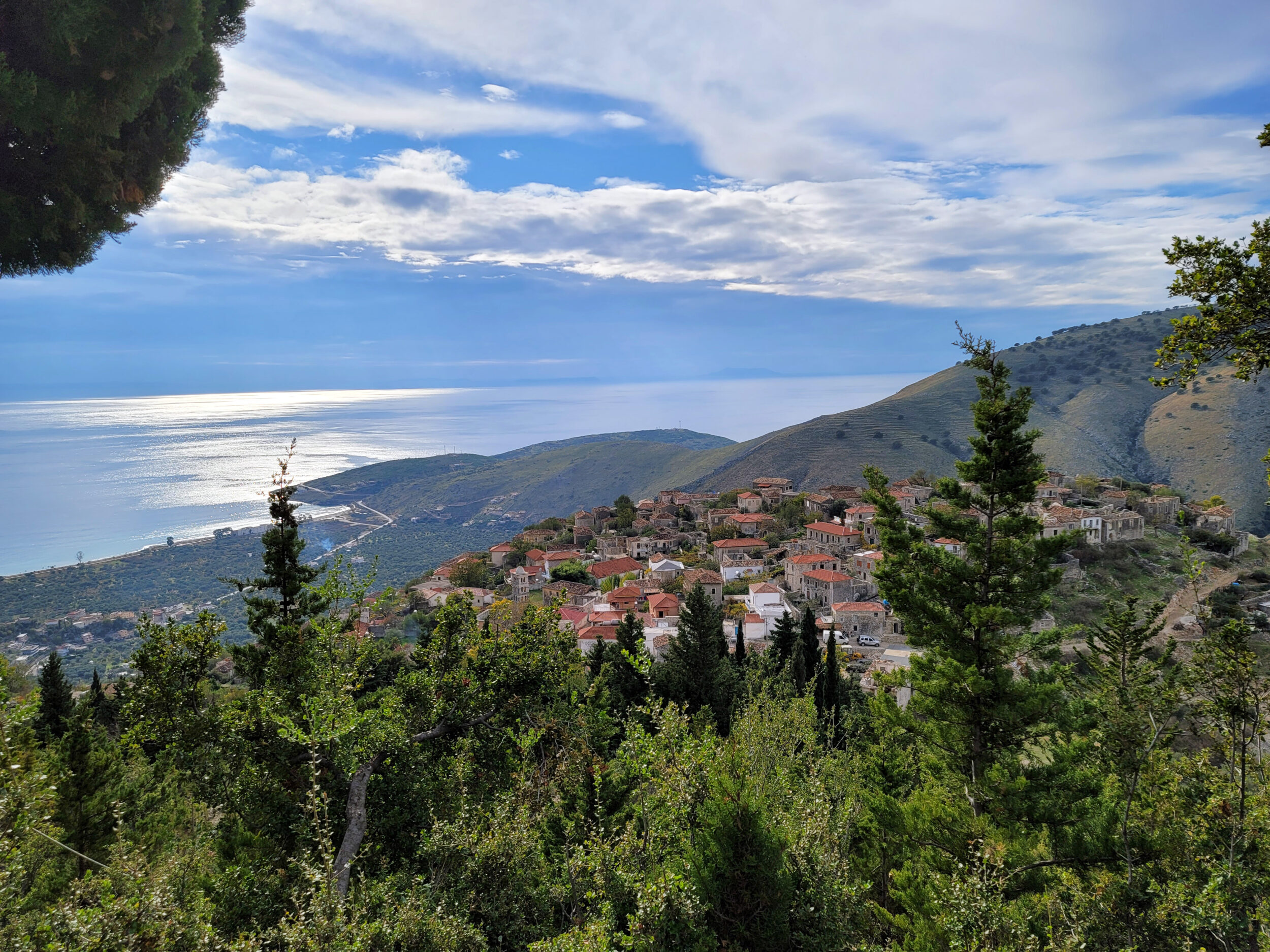
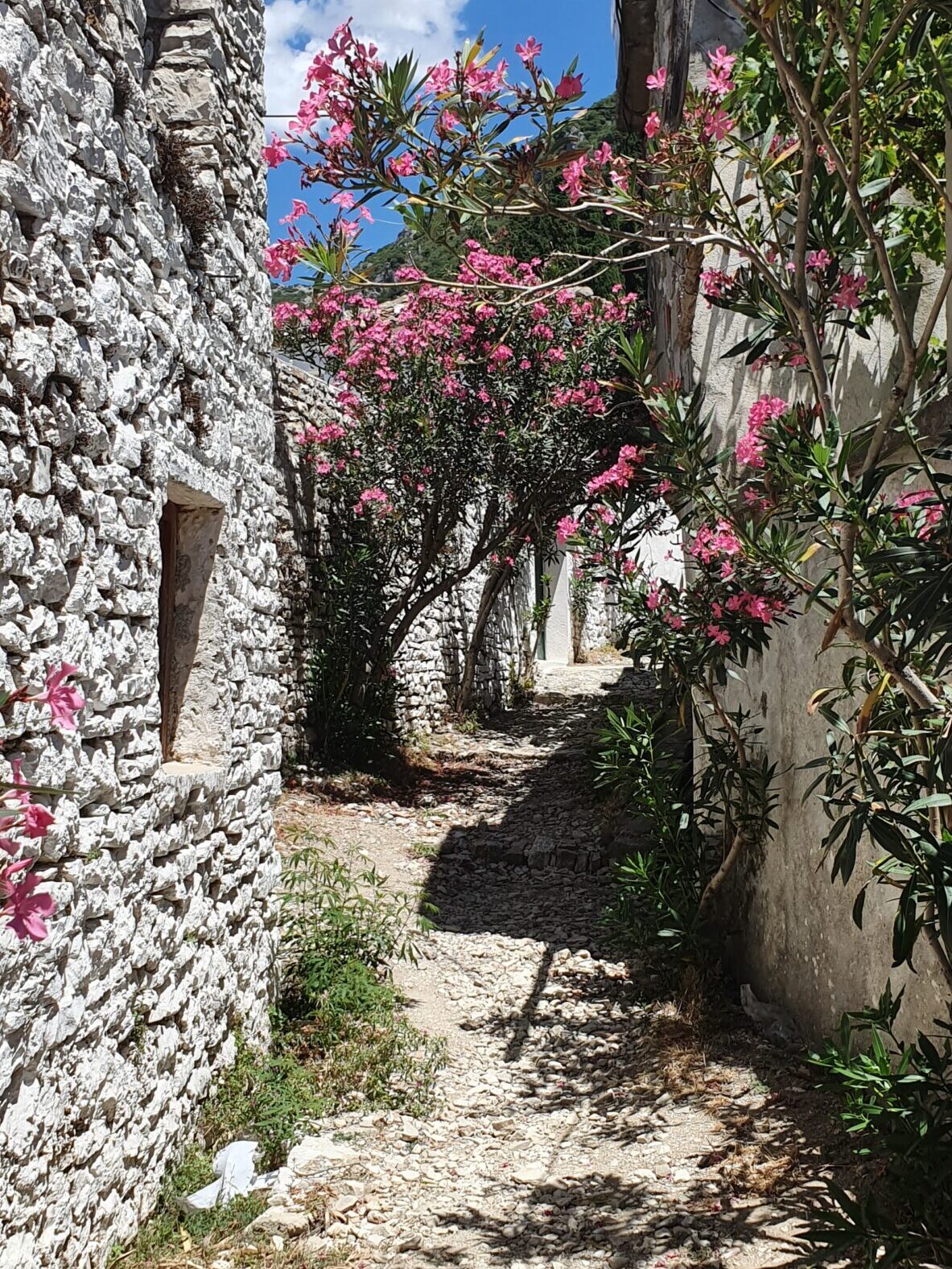
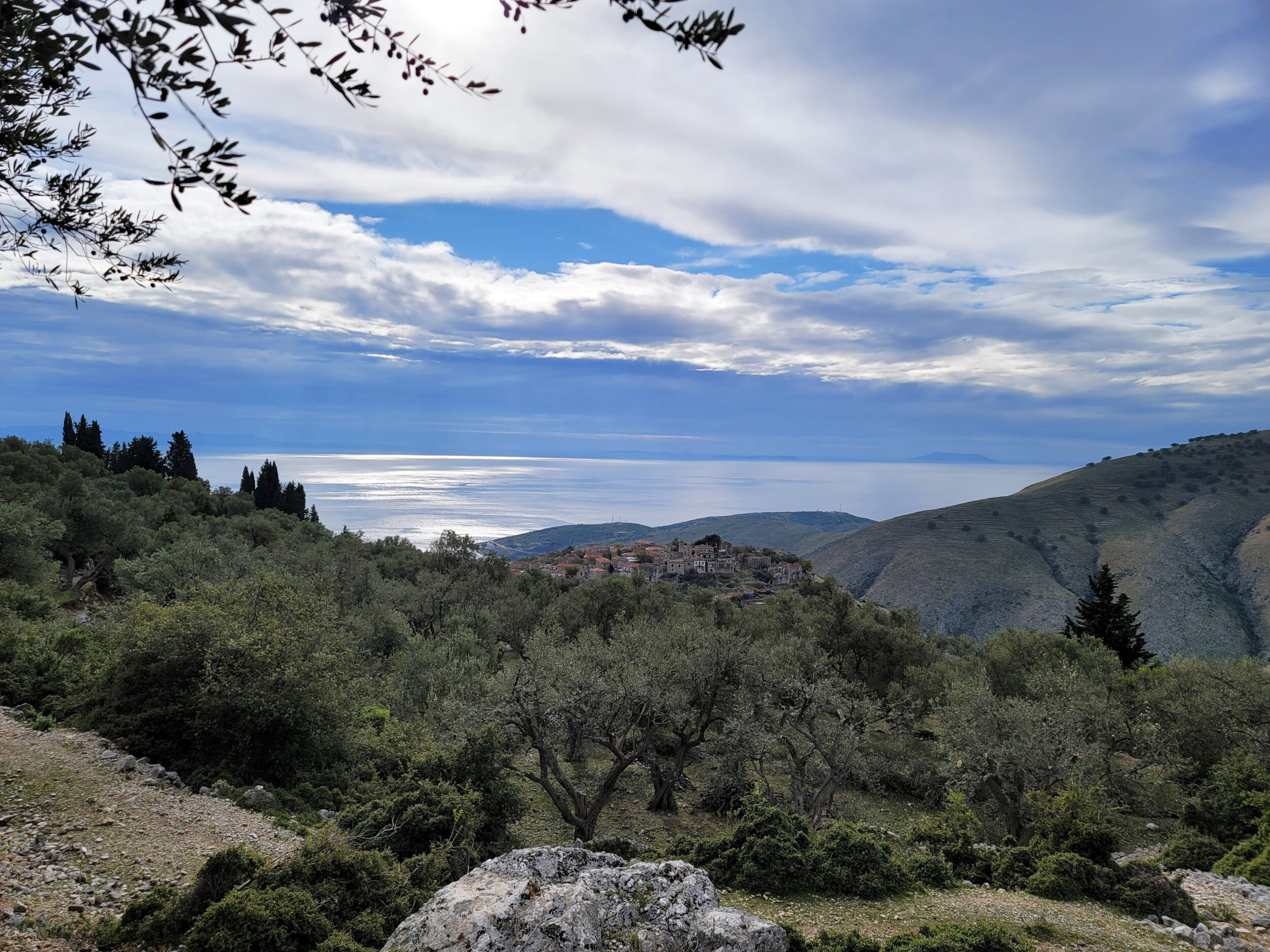
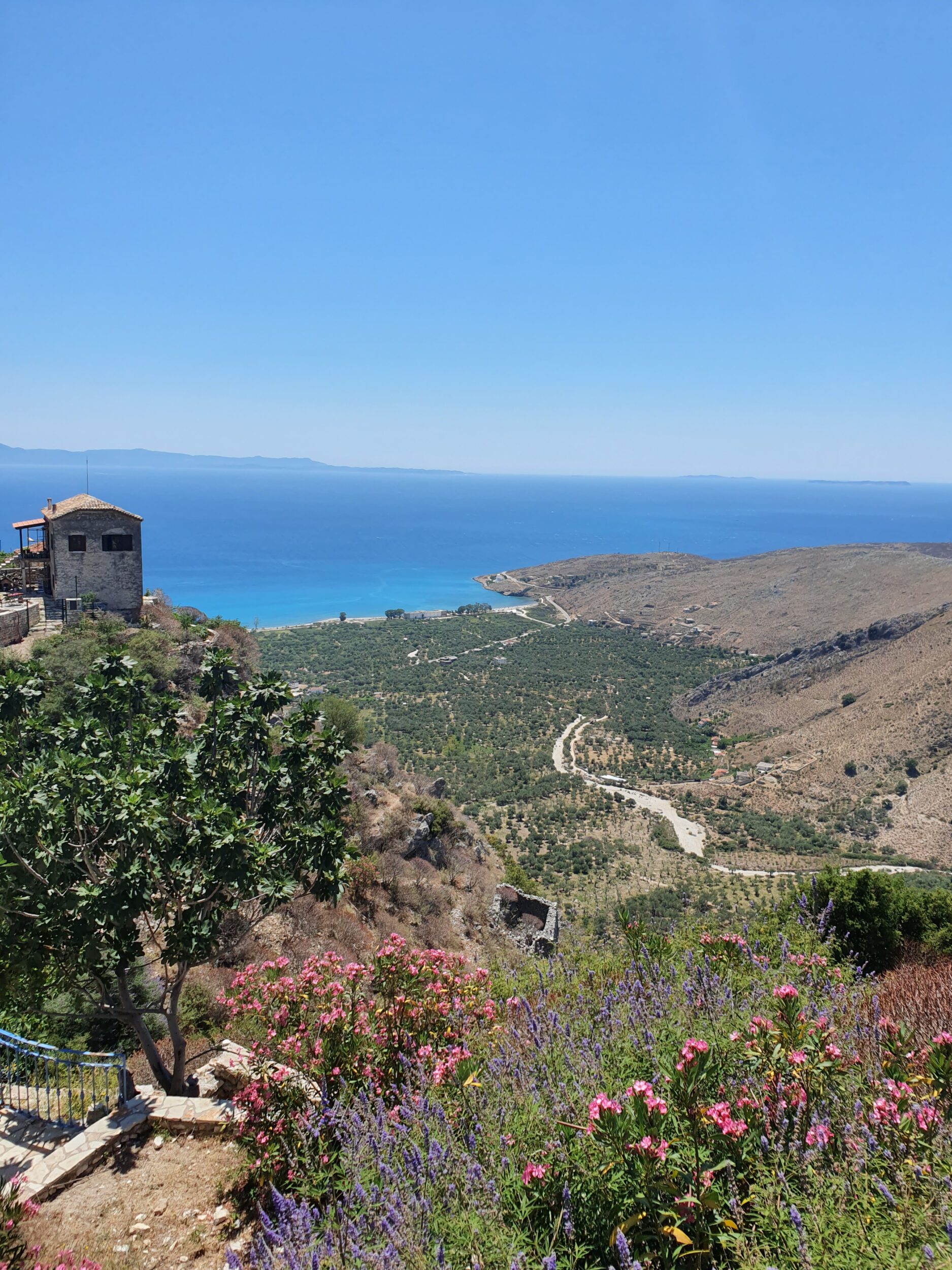
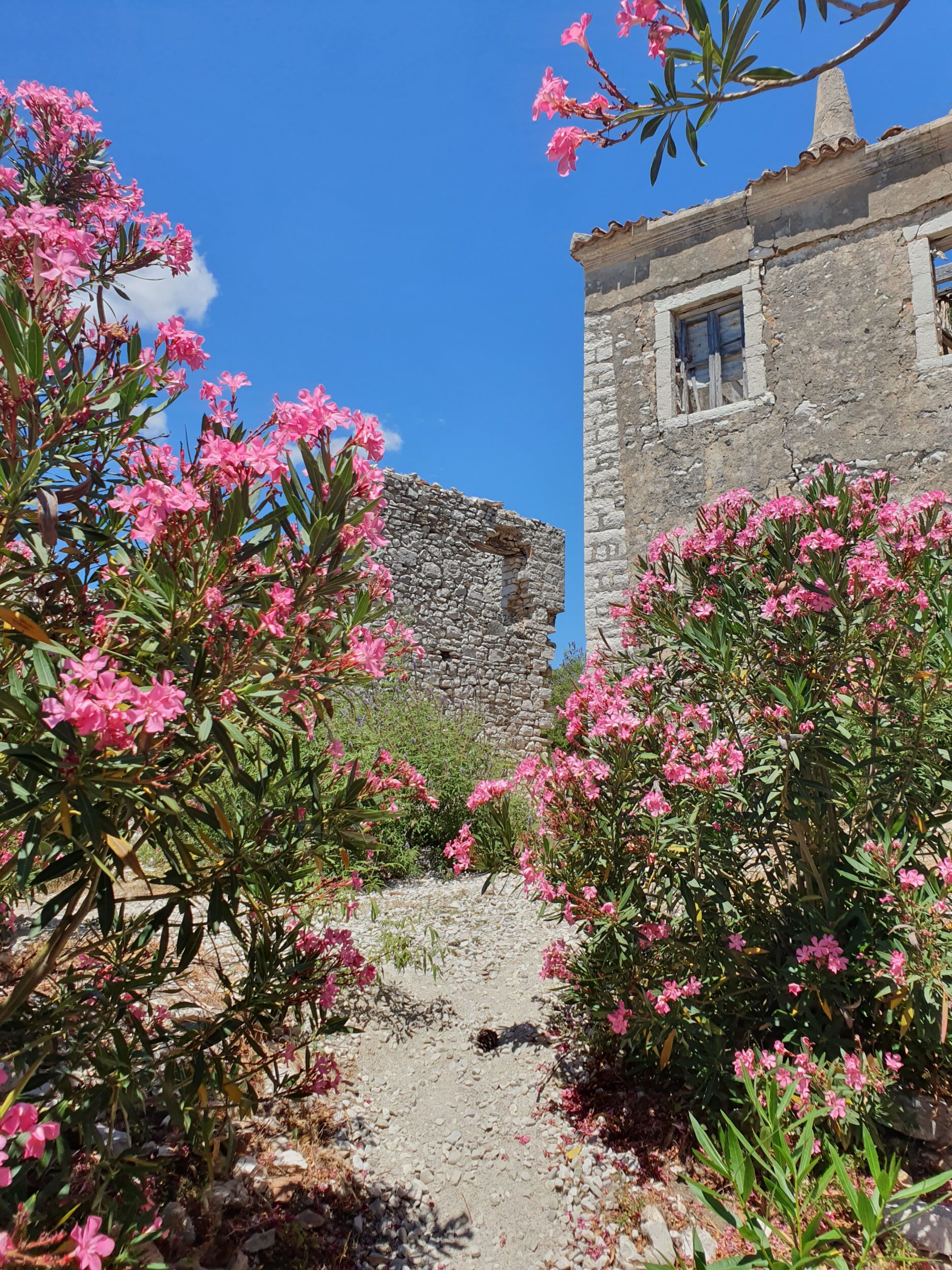
Tragjas: A Forgotten Gem with a View
Set high above the Bay of Vlora and backed by the mighty Çika Mountain, Tragjas feels like a village lost in time — in the best possible way. Its stone-paved alleys, abandoned corners, and restored homes tell stories of resistance, resilience, and rural pride.
This village is perfect for those who want to disconnect. We wandered through pine-covered trails that lead to scenic lookouts above the bay, and stumbled upon a tiny church where the silence itself felt sacred. There’s not much infrastructure here — and that’s exactly what makes it special. You come for the peace, the views, and the feeling that you’ve found something most tourists never will.
But here’s a secret worth sharing: @restorant_rrepet_e_izvorit on Instagram. This local gem offers some of the most delicious, authentic food we’ve tasted in the region — think slow-roasted meat on a spit, fresh herbs, and seasonal vegetables, all cooked with love and skill. It’s where local tradition meets culinary excellence, and trust me, it’s worth the detour.
Tragjas is a place for reflection — ideal for those who want to breathe, hike, eat incredibly well, and feel the heartbeat of the southern Albanian highlands.

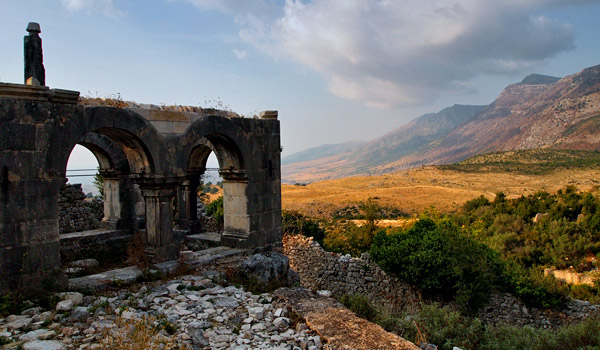
Vuno: Sunlit Hills and Quiet Traditions
Halfway between Dhërmi and Himara lies Vuno — a village that seems to glow under the southern sun. White and terracotta houses scatter across olive-covered hills, their red-tiled roofs peeking out like puzzle pieces. It’s a picture-perfect stop, yet one that remains peaceful and uncrowded.
Vuno is the kind of place where you’ll hear church bells echoing through the valley and roosters crowing in the morning. With two small Orthodox churches and winding lanes framed by dry-stone walls, the village invites you to slow down. One of our most relaxing afternoons was spent here — a quiet hike through the hills, followed by fresh-baked pizza and local wine at a small taverna, under the vines.
From here, it’s easy to reach both Gjipe Canyon and Jale Beach, making Vuno a perfect base for both nature walks and seaside dips. And for those craving an authentic village feel — goats grazing nearby, locals selling walnuts and herbs, no pressure, no rush — Vuno delivers it with charm and grace.
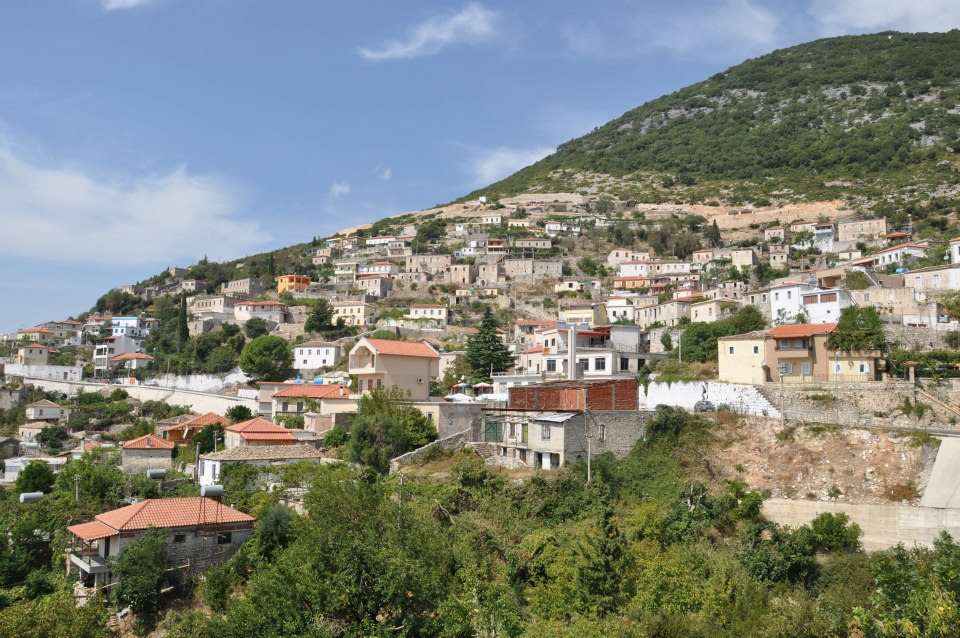
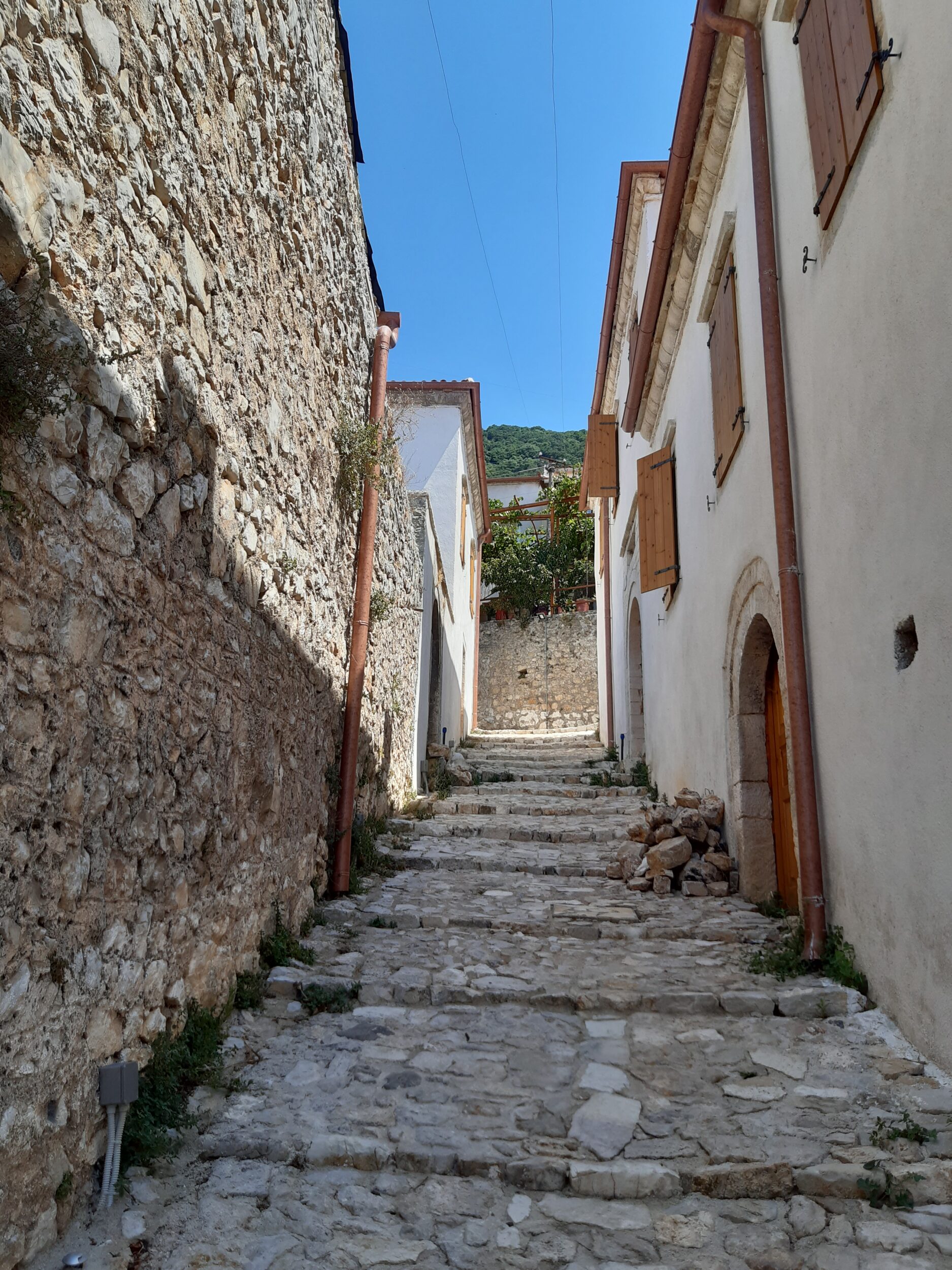
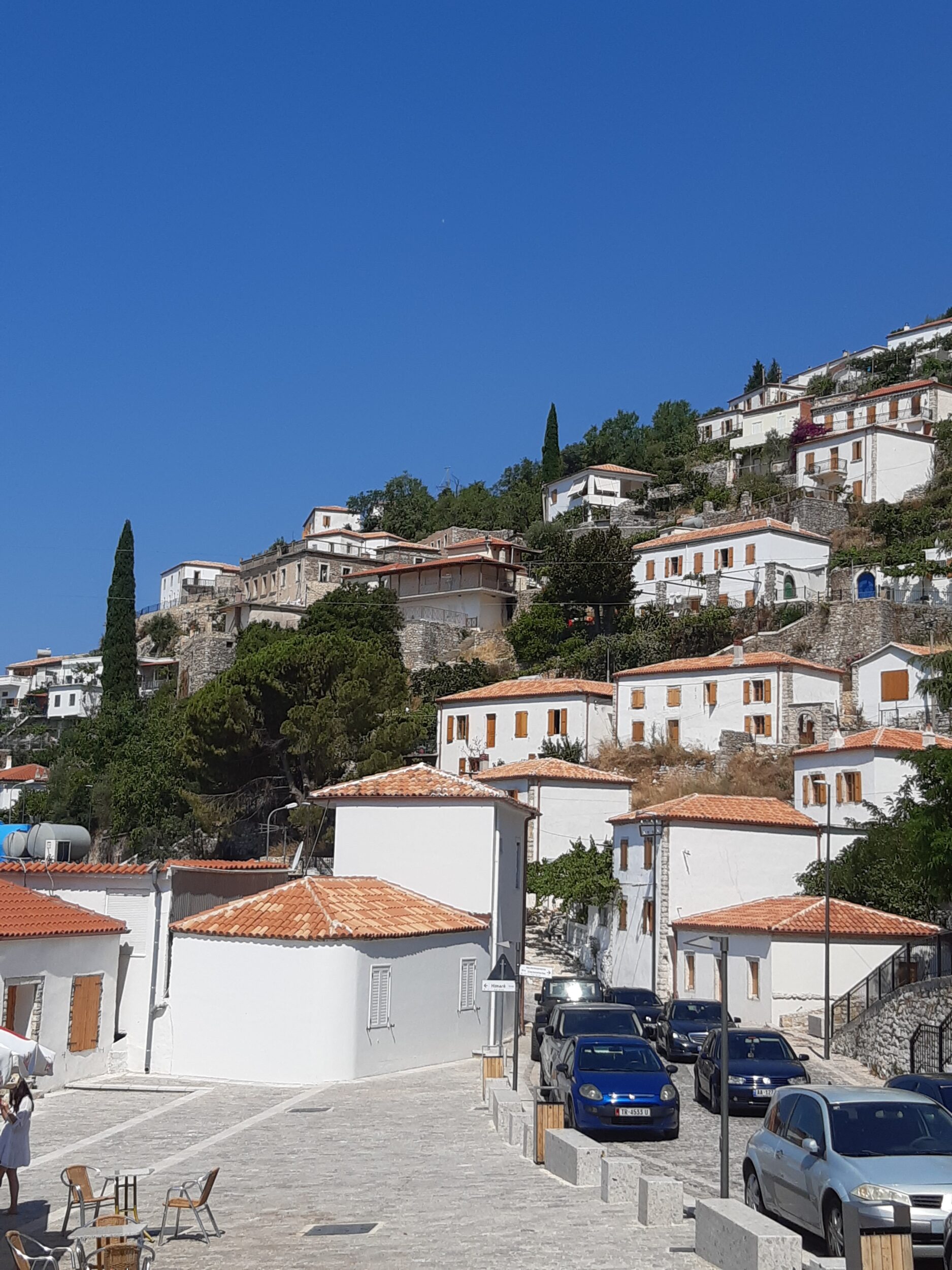
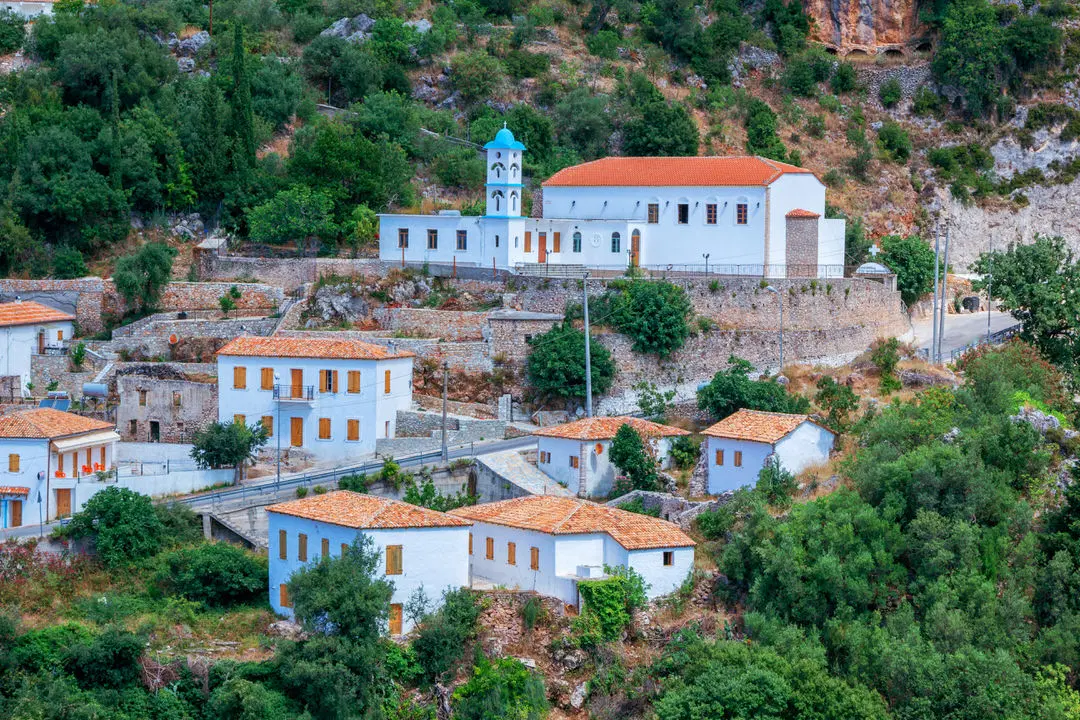
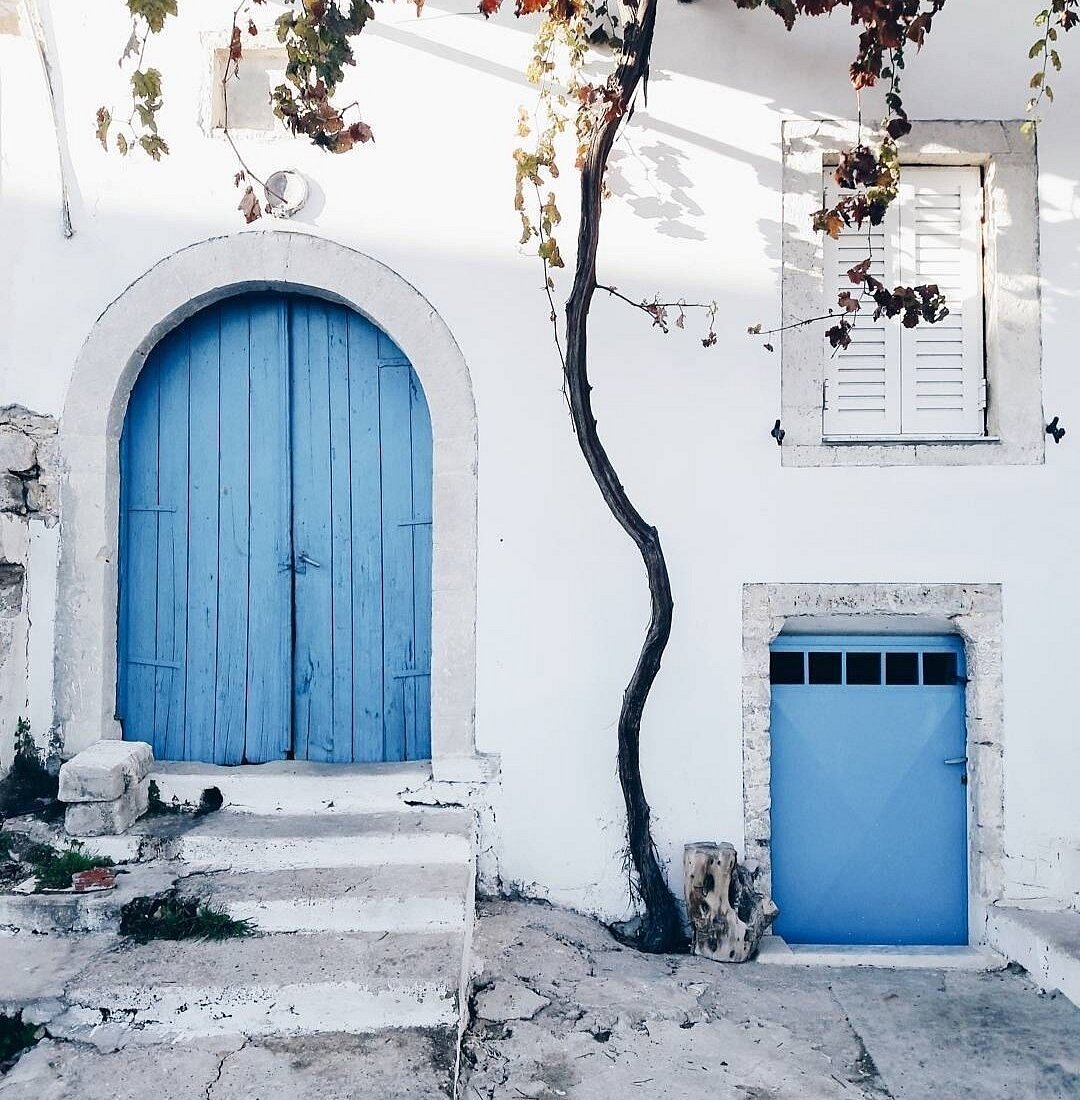
Ready to Discover More?
The villages of the Albanian Riviera offer a quiet kind of magic — where stone meets sky, tradition breathes through song, and hospitality is still served in handmade glasses of raki. Whether you’re hiking from Kudhës to Qeparo, enjoying a spit-roast feast in Tragjas, or listening to polyphonic voices in Pilur, each place adds a new layer to your journey.
But if you’re not quite done exploring the Riviera… we’ve got you covered. Check out our guide to the most stunning coastal spots: Top 10 Beaches You Must Visit in the Albanian Riviera
Trust us — the best trips blend the sun and the soul.


